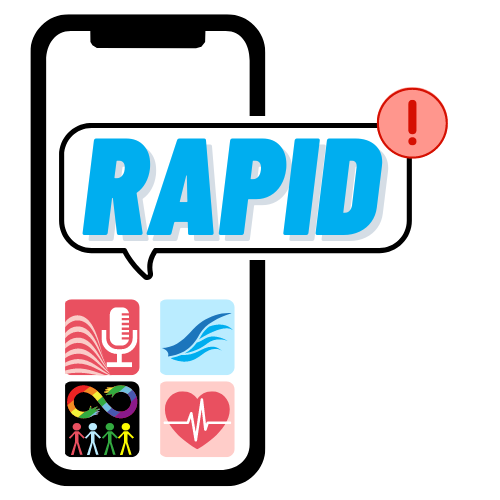Real-Time Analysis of Precursors to Challenging Behaviors for Intervention and Detection (RAPID)

Personnel: Nibraas Khan, Abigale Plunk, Amy Weitlauf, John Staubitz, James Dieffenderfer, Nilanjan Sarkar
Goals/Objectives:
- Alert caregivers of children and adolescents with Intellectual and Development Disabilities of impending problem behaviors using multi-modal machine learning
- Develop well-integrated hardware and software to capture data about the user and predict potential impending problem behaviors in real-time with minimal delays
Outline:
Children and adolescents with Intellectual and Development Disabilities (IDD) show an increased risk of displaying problem behaviors; up to 50% of them present with some form of problem behaviors, with 5-10% developing more severe presentations. These problem behaviors include self-injurious behaviors, aggression toward others, elopement, and property destruction, all of which can result in injury or death and interfere with participation in the home or school environments. Problem behaviors exact a serious toll, both financial and social, on individuals and families as well as educational and healthcare systems. Persistent problem behaviors can put children and their caregivers at risk of potential physical harm and prevent children from learning new skills, excluding them from school services and community opportunities that could increase their quality of life. Therefore, this is a critical situation for the individuals showing this behavior, their families, and the systems that support them. It represents an important target of novel technologies to improve outcomes in the community. Current best practices include practice functional behavioral assessment and function-based treatments; however, they are limited in use as they require the use of an expensive Board-Certified Behavior Analyst.
Our novel system aims to enhance best practice functional behavioral assessment and function-based treatments for severe problem behaviors exhibited by many children and adolescents with IDD, including intellectual disability or Autism Spectrum Disorder (ASD). Multi-modal data captured from participants (heath rate, skin conductance, audio, and upper body pose) is used to develop a predictive model which can alert caregivers of impending problem behaviors with enough time to react before dangerous behavior is exhibited.
The collected data is used to develop machine learning models which can reliably predict impending problem behaviors in real-time. These models will combine a) affective computing through wearable sensing, b) wearable multimodal sensors designed with stakeholder input to maximize comfort and acceptability, with c) expert human input and feedback, and then deployed within current state-of-the-art function-based treatments. Technology of this kind could improve the safety and efficiency of treatment protocols by notifying interventionists, caregivers, or, in the future, people with IDD themselves that behavioral escalation is likely, prompting them to use evidence-based interventions for timely de-escalation or redirection. These models will not replace, but rather supplement existing behavioral methods to not only identify but also alleviate or prevent problem behaviors.
We have completed Aim 1 which was conducting a small study (6 children with ASD) with off-the-shelf and custom hardware to validate that machine learning models can predict reliably. We are currently working on enrolling a large group of children with ASD and use our novel system (with all custom hardware and software) in conjunction with best practices to predict problem behaviors in real-world settings for Aim 2.
Previously known as: Predictive Multimodal Framework to Alert Caregivers (PreMAC) of Precursors to Problem Behaviors
Publications: A Predictive Multimodal Framework to Alert Caregivers of Problem Behaviors for Children with ASD (PreMAC)